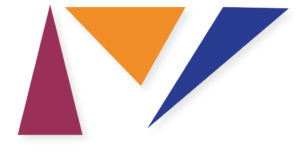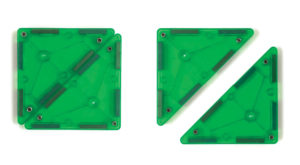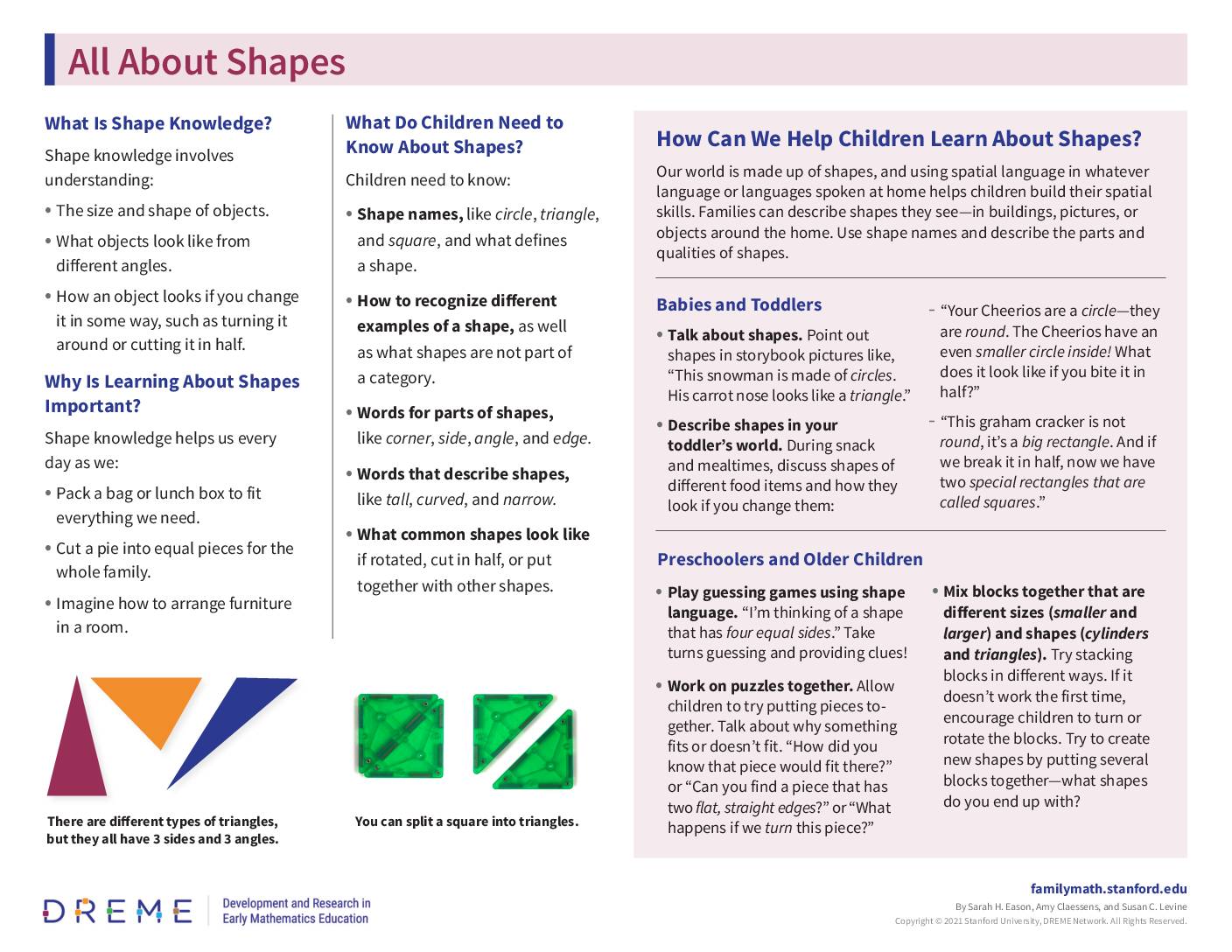
What Is Shape Knowledge?
Shape knowledge involves understanding:
- The size and shape of objects.
- What objects look like from different angles.
- How an object looks if you change it in some way, such as turning it around or cutting it in half.
Why Is Learning About Shapes Important?

Shape knowledge helps us every day as we:
- Pack a bag or lunch box to fit everything we need.
- Cut a pie into equal pieces for the whole family.
- Imagine how to arrange furniture in a room.
What Do Children Need to Know About Shapes?
Children need to know:
- Shape names, like circle, triangle, and square, and what defines a shape.
- How to recognize different examples of a shape, as well as what shapes are not part of a category.
- Words for parts of shapes, like corner, side, angle, and edge.
- Words that describe shapes, like tall, curved, and narrow.
- What common shapes look like if rotated, cut in half, or put together with other shapes.
